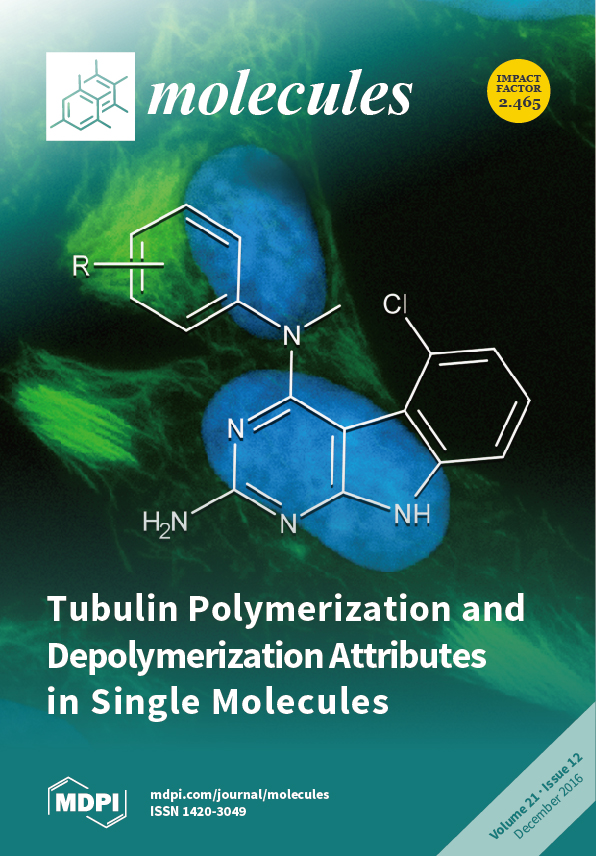Some aporphine alkaloids, such as crebanine, were found to present arrhythmic activity and also higher toxicity. A series of derivatives were synthesized by using three kinds of aporphine alkaloids (crebanine, isocorydine, and stephanine) as lead compounds. Chemical methods, including ring-opening reaction, bromination, methylation,
[...] Read more.
Some aporphine alkaloids, such as crebanine, were found to present arrhythmic activity and also higher toxicity. A series of derivatives were synthesized by using three kinds of aporphine alkaloids (crebanine, isocorydine, and stephanine) as lead compounds. Chemical methods, including ring-opening reaction, bromination, methylation, acetylation, quaternization, and dehydrogenation, were adopted. Nineteen target derivatives were evaluated for their antiarrhythmic potential in the mouse model of ventricular fibrillation (VF), induced by CHCl
3, and five of the derivatives were investigated further in the rat model of arrhythmia, induced by BaCl
2. Meanwhile, preliminary structure-activity/toxicity relationship analyses were carried out. Significantly,
N-acetamidesecocrebanine (
1d), three bromo-substituted products of crebanine (
2a,
2b,
2c),
N-methylcrebanine (
2d), and dehydrostephanine (
4a) displayed antiarrhythmic effects in the CHCl
3-induced model. Among them, 7.5 mg/kg of
2b was able to significantly reduce the incidence of VF induced by CHCl
3 (
p < 0.05), increase the number of rats that resumed sinus rhythm from arrhythmia, induced by BaCl
2 (
p < 0.01), and the number of rats that maintained sinus rhythm for more than 20 min (
p < 0.01). Therefore,
2b showed remarkably higher antiarrhythmic activity and a lower toxicity (LD
50 = 59.62 mg/kg, mice), simultaneously, indicating that
2b could be considered as a promising candidate in the treatment of arrhythmia. Structural-activity analysis suggested that variationsin antiarrhythmic efficacy and toxicity of aporphines were related to the C-1,C-2-methylenedioxy group on ring A, restricted ring B structural conformation,
N-quaternization of ring B, levoduction of 6a in ring C, and the 8-, 9-, 10-methoxy groups on ring D on the skeleton.
Full article






